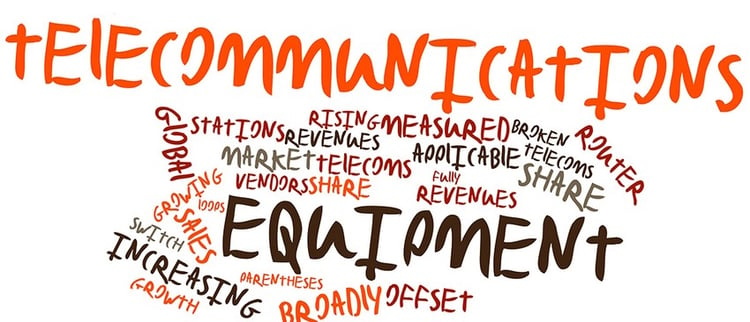
At VTSL, we pride ourselves on speaking to you in plain English, without heavy technical jargon that often confuses even the most tech-savvy individuals. Whether you are a trained IT expert, or an office manager with little telecoms knowledge, we want you to know what you are getting and feel like we speak the same language you do.
There are however basic terms that you will want to understand the meaning of in order to read a quote, understand a proposal, or make a decision about an upgrade. Our representatives are always happy to explain exactly what each one of these things is, but a quick read of this guide may mean you don't even have to ask. Here we have compiled the most common telecoms terms and a straight-forward explanation of each.
DDI - DDIs are ‘Direct Dial In’ numbers. These are additional numbers that can be associated with the main number of your business. This allows each telephone extension to have an individual number.
Hosted / Cloud systems - Communications platforms in which the application sits in the cloud (data centres) and as a subscriber you connect to it for a monthly fee. There is no, or very little, on-site equipment, and upgrades happen automatically.
Auto-attendant - Also called IVR (Interactive Voice Response) auto-attendant is an automated answer system that provides menus to callers, allowing efficient routing of calls. This ensures calls reach the appropriate person without using valuable resource.
Router - A router is a piece of network hardware that connects a local network to the Internet. Routers are an essential part of most VoIP telephony and internet networks. There are wired and wireless types.
Ethernet - Ethernet is a way of connecting computers together in a local area network (LAN), with protocols to control the passing of information. An Ethernet cable is the physical, encased wiring over which the data travels.
FTTC - This stands for Fiber to the Cabinet. It is a type of broadband and refers to fibre optic cables being used from the exchange to the cabinet. Copper cable is used from the cabinet to the office.
Call recording - A feature in which all or some calls are recorded, either manually or automatically, and can be listened to later. It is a great tool for administrators that need to record calls for training, compliance or monitoring. Recorded calls are saved in call logs and can be played back any time.
Connectivity - In this context, connectivity usually refers to an internet connection. Network connection is also used.
Call queuing - A telephone system feature in which calls are delivered to available staff on a first-in, first-out basis. Callers are notified of their position in the queue. Music, information or notices can be played to them while they wait.
Call Reporting - The ability to report on the behaviour of your users by tracking all calls on your phone system. Search data to identify who picks up the call quickly, who is on the phone the most often and a variety of other metrics.
Programmable keys - Keys on your phone that you can programme centrally (in an online portal) for different functions. Learn more here in our programmable keys video.
Line appearance - Line appearances represent how many lines from the phone system are available through a phone’s interface. For example, a VoIP phone with three line appearances can display and manage three calls at once. There may be two callers on hold while another caller is currently engaged with the user. This type of functionality is extremely important for most businesses.
Leased lines - Leased lines are dedicated data connections that are used to:
- connect to the Internet
- link PCs and servers in different corporate offices
- carry phone calls
- enable staff to connect to their work PCs from home
PoE (Power over Ethernet) switches - Power over Ethernet switches are switches combine a power source and data through the Ethernet cable. Using Power over Ethernet removes the need for a power source at the device. PoE switches are suitable for network webcam setups, intercom systems, VoIP and wireless access points where there is no power nearby.
VoIP - VoIP stands for Voice over internet protocol and will be the standard phone systems for all businesses by 2025 when BT turns 'off' the PSTN and ISDN networks than traditional landline phone systems depend on. VoIP involves sending voice packets across internet connections.
Unified communications - This means the integration of real-time communications services, such as telephony, chat and desktop sharing. Read our blog on unified communications here.
About VTSL
VTSL offer the full suite of cutting edge communications solutions for your business -- from private fibre networks, to business-grade WiFi to video conferencing and cloud-based business VoIP telephony. As pioneers of IP telephony services and over 10 years of experience implementing unified communications solutions, it is no wonder why VTSL is an award-winning telecoms provider year after year. For more information on how to future-proof your office with the latest tech, speak to one of our experts today. Call 020 7078 3200 or email us at info@vtsl.net.

